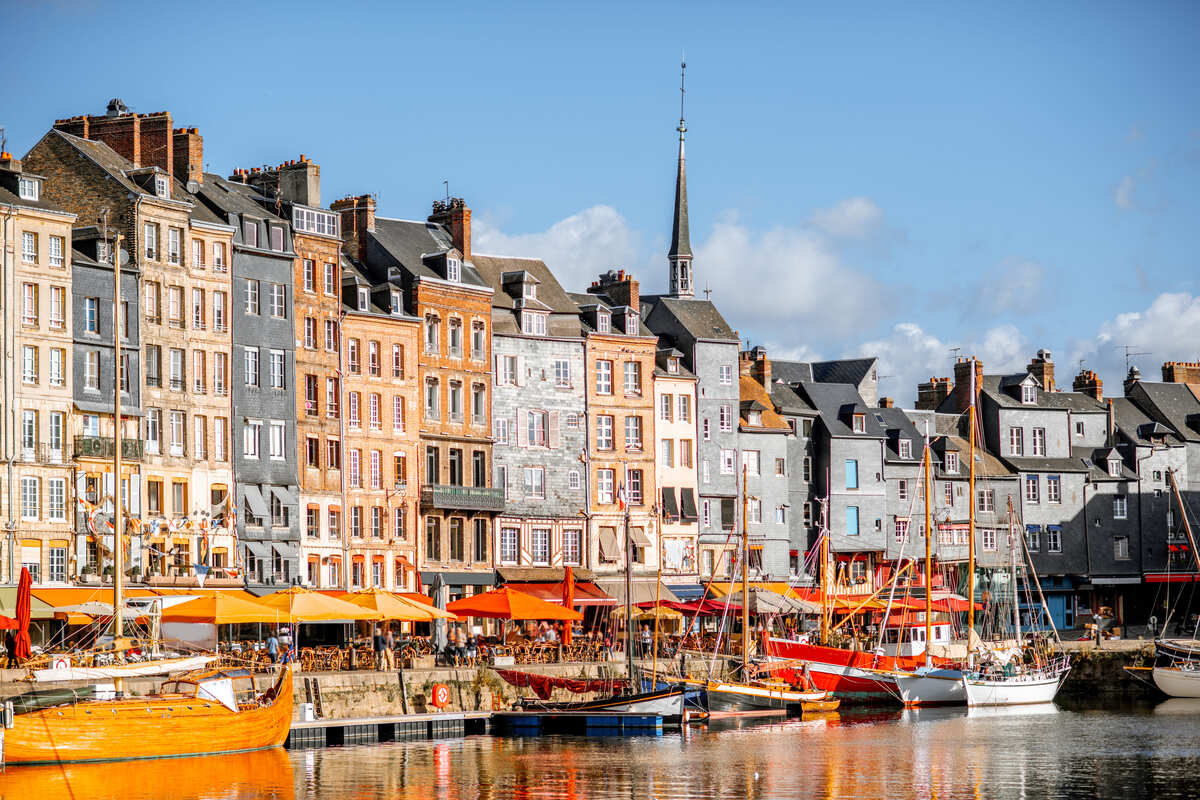Share the article
Last updated
Europe, a vast continent rich in historical sights, is the number one spot this season if you love culture.
This is especially true as temperatures rise and a host of direct flights are relaunched to some of the trendiest destinations, but there’s a catch.

As demand grows, the cost of holidays rises dramatically, and they may be breathtaking, but cities like London, Paris and Milan wouldn’t be at the top of our summer wish list: we leave them to those with a big budget and who don’t mind the crowds.
Instead, you can find us here 4 medieval gems which are not only just as fascinating, but also quieter and much friendlier to the wallet:
Honfleur, France


Just two and a half hours from Paris is Honfleur, a historic port town on the Normandy coast that locals have successfully managed to hide from most foreigners visiting France: whether in high season or off season, they have the tendency to avoid it all altogether.
Interestingly enough, this is one of the best preserved and most beautiful medieval settlements in France.
It is famous for its Vieux-Bassin, a picturesque waterfront lined by 16th-century buildings, Église Sainte Catherine, the largest wooden church in the country, and cobbled alleys.


It has also posed as a muse for none other than Claude Monet, who painted The Sandy Beach in the summer of 1864, as well as Rue de la Bavolean impressionistic work depicting a narrow street in Honfleur still flanked by colorful cafés and half-timbered houses.
Despite being located in France, one of the most expensive countries in Europe, Honfleur is relatively affordablewith lunch menus at local restaurants costing $15-17, make sure you try a local dish Coquille Sint-Jacquesand hotel stays from $76.
Granada, Spain


Tucked away in the hinterland of Spain’s Andalusia, Moorish Granada is one of the top destinations for soaking up Europe’s culture in the hottest months, and it’s just a 1h20 train ride from the busy coastal city of Malaga.
Granada is characterized by a whitewashed, hilly old town, which dates back to the period of Muslim rule in Spain, when the country succumbed to the rule of Islamic dynasties from North Africa. In addition to its eclectic architecture, it is best known for its… Fort Alhambra.


The bucket-list palace was built by the invading Moors in an attempt to assert control over the area, and it remains one of the most important Islamic monuments preserved in Spain after the war. Reconquestwhen the Christians took back control.
Fortunately for the budget conscious, Granada and Andalusia as a whole is quite affordable to visit: a lunch consisting of Andalusian salmorejofried fish (pescaito frito) and a drink can cost $17, and booking a single room in the city center will cost you $50-69.
Gdansk, Poland


Located on the Baltic coast, Gdańsk is a rare example of a medieval port in Europe’s far northeast that has reemerged as gloriously as ever, despite bombing in World War II. And if you ask us: it’s easy The most beautiful in Poland.
The Old Town is an absolute wonder, with a long pedestrianized main street (Długa) lined by tall, lean facades in various shades of muted green, yellow and red, as dictated by Northern Mannerism, and tall towers and spiers piercing the walls. otherwise low skyline.


If you are a lover of the Middle Ages, some of Gdańsk’s main sights that you should not miss are the Basilica of St. Mary, one of the three largest brick structures in the world, the ornate Golden Gate and the iconic wooden ‘Crane’ , dated 1367.
Because the country has yet to adopt the euro, and thanks to the lower cost of living, holidays in Poland are a lot more affordable Compared to Western Europe, there are spa hotels that cost from $64 per night to book, and you can certainly get by on an average of $55 per day.
Varazdin, Croatia


Varazdin, hidden in the hinterland of Croatia, kilometers away from the busy coast and close to the three-point border with Slovenia and Hungary, is a historical city First mentioned in the 12th century, it is distinguished by its Baroque opulence and whitewashed citadel.
Strolling through the pastel-colored Old Town, you will find a host of informal cafes, textile shops, producing Varazdin’s most prized export, and traditional Slavic restaurants where you can taste dishes native to this part of Croatia, namely meat stews and pork sausages. .


As you might have guessed, Varazdin exists in a completely different world from Dalmatian cities like Dubrovnik and Split: although they have a strong Italian character, reflecting centuries of Mediterranean trade and values, this settlement of 40,000 inhabitants is strongly Italian in character. clearly Slavic.
You can see it in the architecture, which clearly leans towards Central Europe, as opposed to Venetian, in the ethnic composition of the local population, who are less tanned than their average Dalmatian counterparts, and of course in the green plains that surround the city and the milder climate.


Varazdin is a short one-hour bus ride from Zagreb, Croatia’s equally underrated, non-coastal capital, and if you’re wondering about the prices: a three-night stay in a central, fairly luxurious hotel costs $269 per day. average, while meals in local restaurants are 31% cheaper than in touristy Dalmatia.


✈️Join our Travel Off Path community forum: Where travelers come together, ask questions, share experiences and even find like-minded travel companions!
SUBSCRIBE TO OUR LATEST POSTS
Enter your email address to subscribe to the latest Travel Off Path breaking travel news, delivered straight to your inbox.
This article originally appeared on TravelOffPath.com
The opinions expressed here are solely those of the author, and not those of any bank, credit card issuer, hotel, airline or other entity. This content has not been reviewed, approved, or otherwise endorsed by any of the entities included in the post.





